75899-68-2
| Name | hne |
|---|---|
| Synonyms |
(2E)-4-Hydroxynon-2-enal
2-Nonenal, 4-hydroxy-, (E)- 4-hydroxy-trans-2-nonenal 4-hydroxy-2E-nonenal 4-hydroxy-2,3-trans-nonenal 4-hydroxy-2-nonena 4-hydroxynon-2-enal MFCD00211020 2-Nonenal, 4-hydroxy-, (2E)- (E)-4-hydroxynon-2-enal 4-hydroxynonenal 4-HYDROXY-2-NONENAL |
| Description | 4-Hydroxynonenal (4-HNE) is an α,β unsaturated hydroxyalkenal and an oxidative/nitrosative stress biomarker. 4-Hydroxynonenal is a substrate and an inhibitor of acetaldehyde dehydrogenase 2 (ALDH2). 4-Hydroxynonenal can modulate a number of signaling processes mainly through forming covalent adducts with nucleophilic functional groups in proteins, nucleic acids, and membrane lipids. 4-Hydroxynonenal plays an important role in cancer through mitochondria[1][2][3]. |
|---|---|
| Related Catalog | |
| Target |
Human Endogenous Metabolite |
| In Vitro | 4-Hydroxynonenal is both a substrate and an inhibitor of ALDH2; inhibition of ALDH2 by 4-Hydroxynonenal is reversible at low concentration and become irreversible when the concentration of 4-HNE reaches 10 µM[1]. 4-Hydroxynonenal can induce antioxidant defense mechanisms to restrain its own production and to enhance the cellular protection against oxidative stress[1]. 4-Hydroxynonenal, the product of lipid peroxidation, is mutagenic and genotoxic in viruses, bacteria and mammalian cells. It reacts with all four DNA bases but with different efficiency: G >C > A >T. 4-Hydroxynonenal-dG represents the best biomarker of the genotoxic effects of 4-Hydroxynonenal and these adducts are primarily found in nuclear DNA. A classic example of etiological relevance of 4-Hydroxynonenal-dG in human cancers is 4-Hydroxynonenal-dG induced p53 mutation. 4-Hydroxynonenal-dG adducts were preferentially formed at the third base of codon 249 in the p53 gene, causing gene mutation and affecting diverse biological processes including cell cycle arrest, apoptosis, DNA repair, and differentiation[1]. |
| In Vivo | Following 24 h after fluid percussion injury (FPI), the mouse brain tissue is analyzed for the expression level of NADPH oxidase 1 (NOX1), inducible nitric oxide synthase (iNOS), 4-Hydroxynonenal (4-HNE. Both wild-type (Nrf2+/+) and Nrf2-deficient mice (Nrf2−/−) results in increased expression of 4-Hydroxynonenal following 15 psi injury (moderate injury) when compared to uninjured Nrf2+/+ and Nrf2−/− mice. Similar to iNOS result, in Nrf2−/− KO mice, the expression level of 4-Hydroxynonenal is significantly high when compared to corresponding injured and uninjured Nrf2+/+ WT animals[2]. |
| References |
| Density | 0.9±0.1 g/cm3 |
|---|---|
| Boiling Point | 275.6±23.0 °C at 760 mmHg |
| Molecular Formula | C9H16O2 |
| Molecular Weight | 156.222 |
| Flash Point | 115.2±15.2 °C |
| Exact Mass | 156.115036 |
| PSA | 37.30000 |
| LogP | 1.85 |
| Vapour Pressure | 0.0±1.3 mmHg at 25°C |
| Index of Refraction | 1.460 |
| Storage condition | -70°C |
CHEMICAL IDENTIFICATION
HEALTH HAZARD DATAACUTE TOXICITY DATA
MUTATION DATA
|
| Hazard Codes | Xi |
|---|---|
| Risk Phrases | R36/37/38:Irritating to eyes, respiratory system and skin . |
| Safety Phrases | S26-S37/39 |
| HS Code | 2912491000 |
| Precursor 6 | |
|---|---|
| DownStream 3 | |
| HS Code | 2912491000 |
|---|---|
| Summary | 2912491000. other aldehyde-alcohols. VAT:17.0%. Tax rebate rate:13.0%. . MFN tariff:5.5%. General tariff:30.0% |
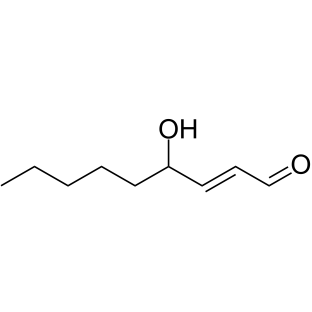
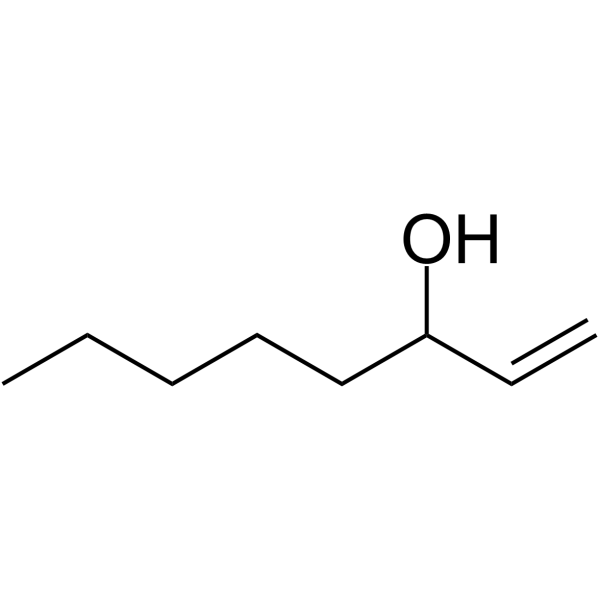

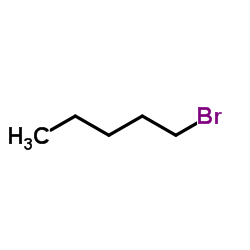
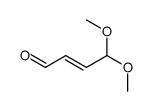
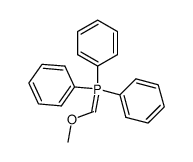


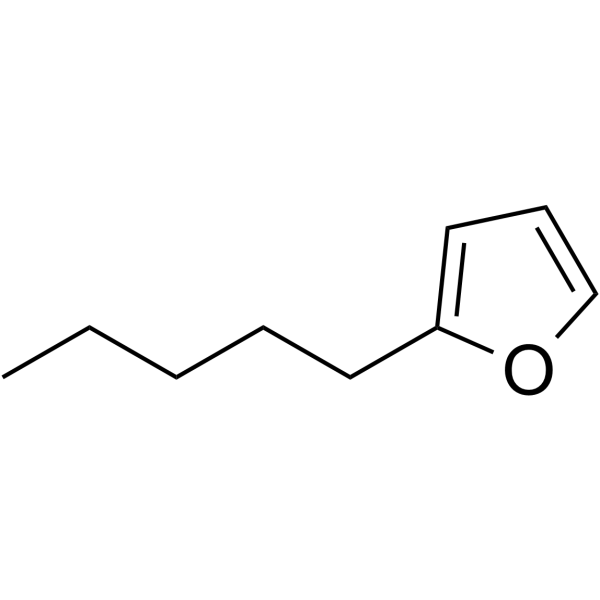
![3,5-dihydroimidazo[2,1-b]purin-4-one structure](https://image.chemsrc.com/caspic/322/62962-42-9.png)